Amache Wood Carvings featured in JANM Contested Histories Episode 3 on May 23, 2020
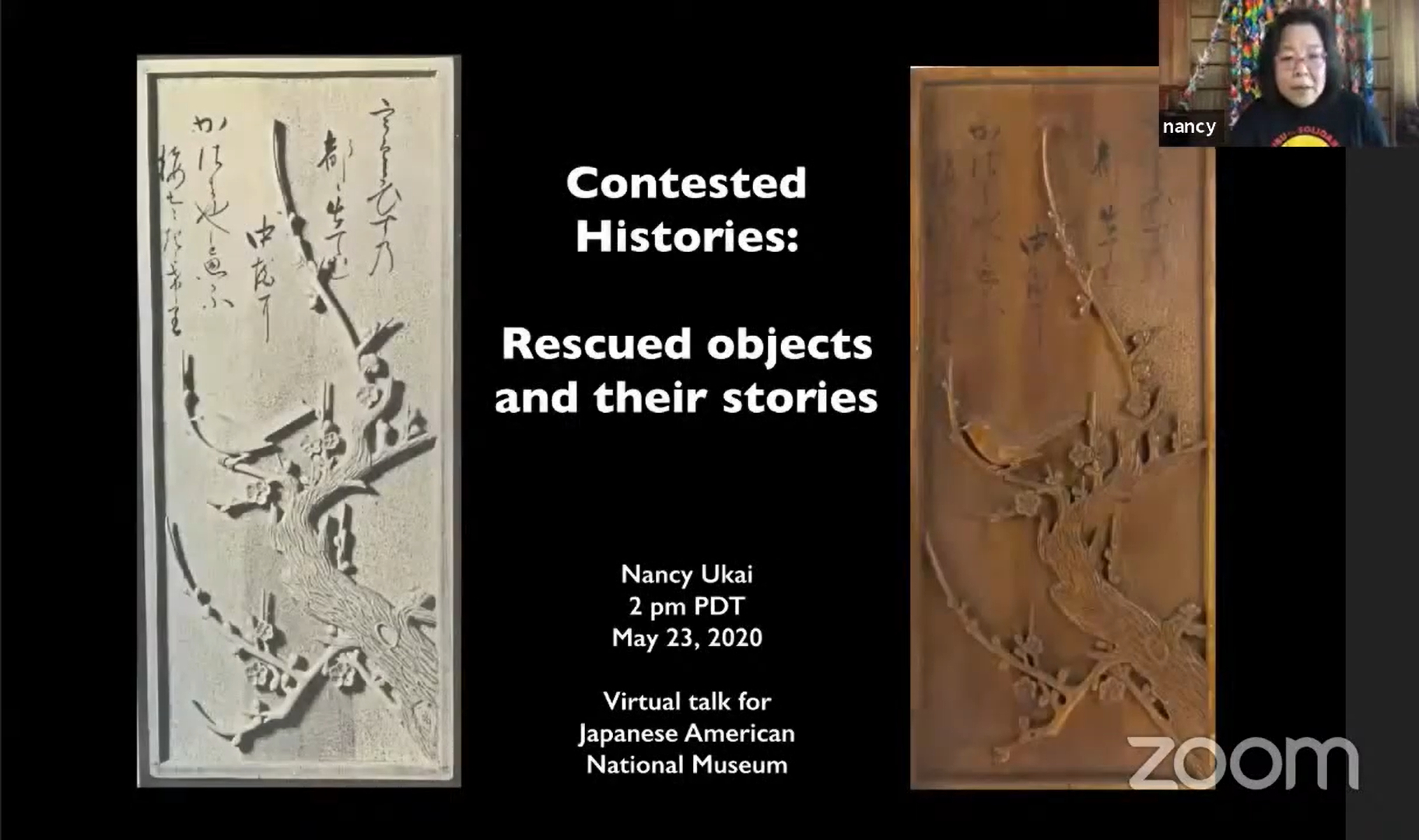 Nancy Ukai, Project Director of 50 Objects/Stories, joined Clement Hanami of the Japanese American National Museum for a presentation and Q & A as part of the exhibit Contested Histories, Art and Artifacts from the Allen Hendershott Eaton Collection. Her presentation showcases a series of wood carvings, most made at Amache. Watch the episode on YouTube.
Nancy Ukai, Project Director of 50 Objects/Stories, joined Clement Hanami of the Japanese American National Museum for a presentation and Q & A as part of the exhibit Contested Histories, Art and Artifacts from the Allen Hendershott Eaton Collection. Her presentation showcases a series of wood carvings, most made at Amache. Watch the episode on YouTube.
Discussion with Amache Survivor Preserved by Story Corps
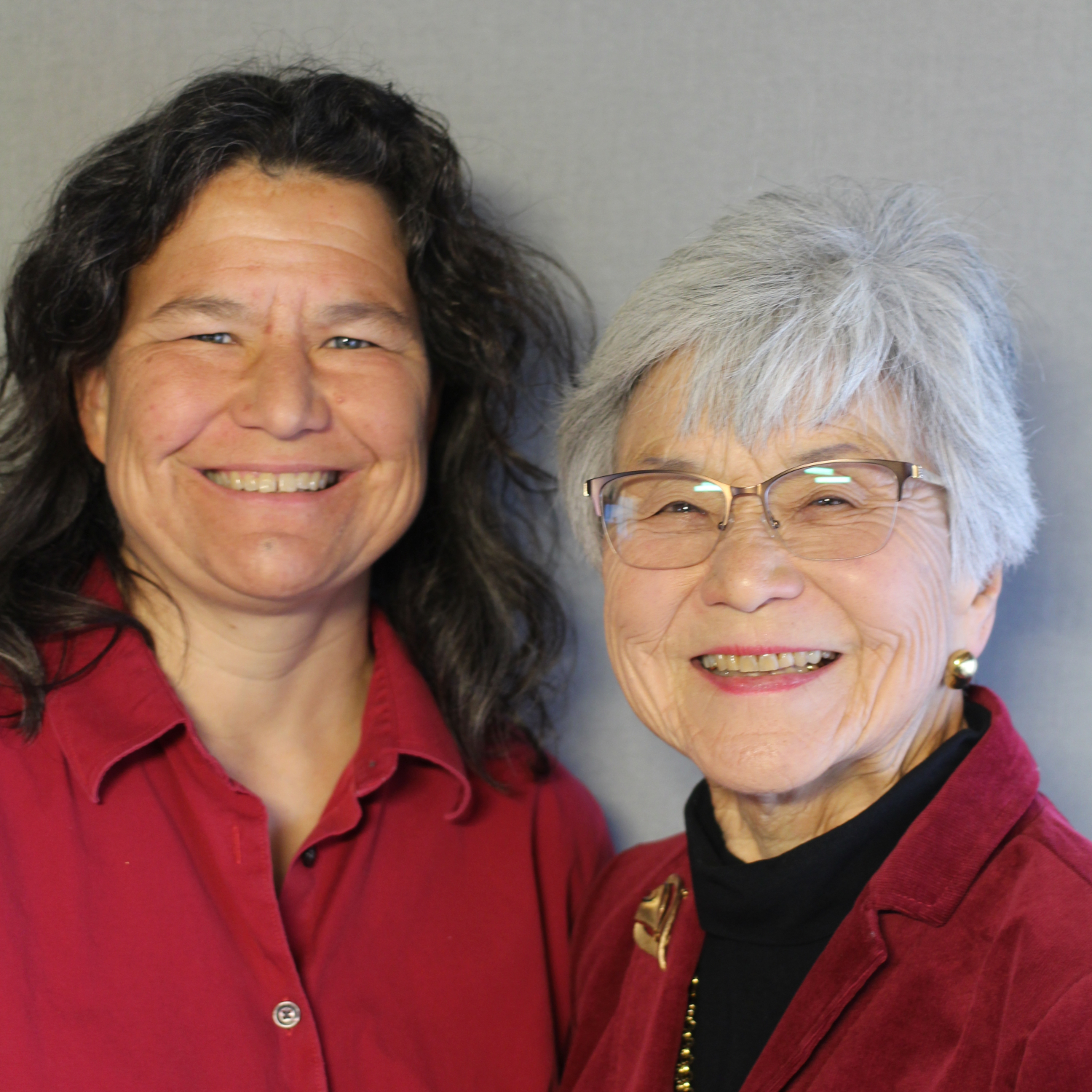 On March 1, 2020 Julia Tinker recorded a discussion with her mother, Amache survivor Carlene Tanigoshi Tinker during the Story Corps mobile tour. They talked about their experiences as Japanese Americans, including cultural traditions passed down through generations and experiences with racism. Carlene also recalled the power of standing in the location of her living quarters at Amache the first time she returned as an adult. Listen to their full interview archived on Story Corps.
On March 1, 2020 Julia Tinker recorded a discussion with her mother, Amache survivor Carlene Tanigoshi Tinker during the Story Corps mobile tour. They talked about their experiences as Japanese Americans, including cultural traditions passed down through generations and experiences with racism. Carlene also recalled the power of standing in the location of her living quarters at Amache the first time she returned as an adult. Listen to their full interview archived on Story Corps.
TBK Bank Donates Building for New Amache Museum
 The TBK Bank, SSB, donated its building in Granada to the Granada School District to be used as the new location for the Amache Museum. A key handing ceremony was held on December 12, 2019.
The TBK Bank, SSB, donated its building in Granada to the Granada School District to be used as the new location for the Amache Museum. A key handing ceremony was held on December 12, 2019.
JA Confinement Sites Featured in National Campaign
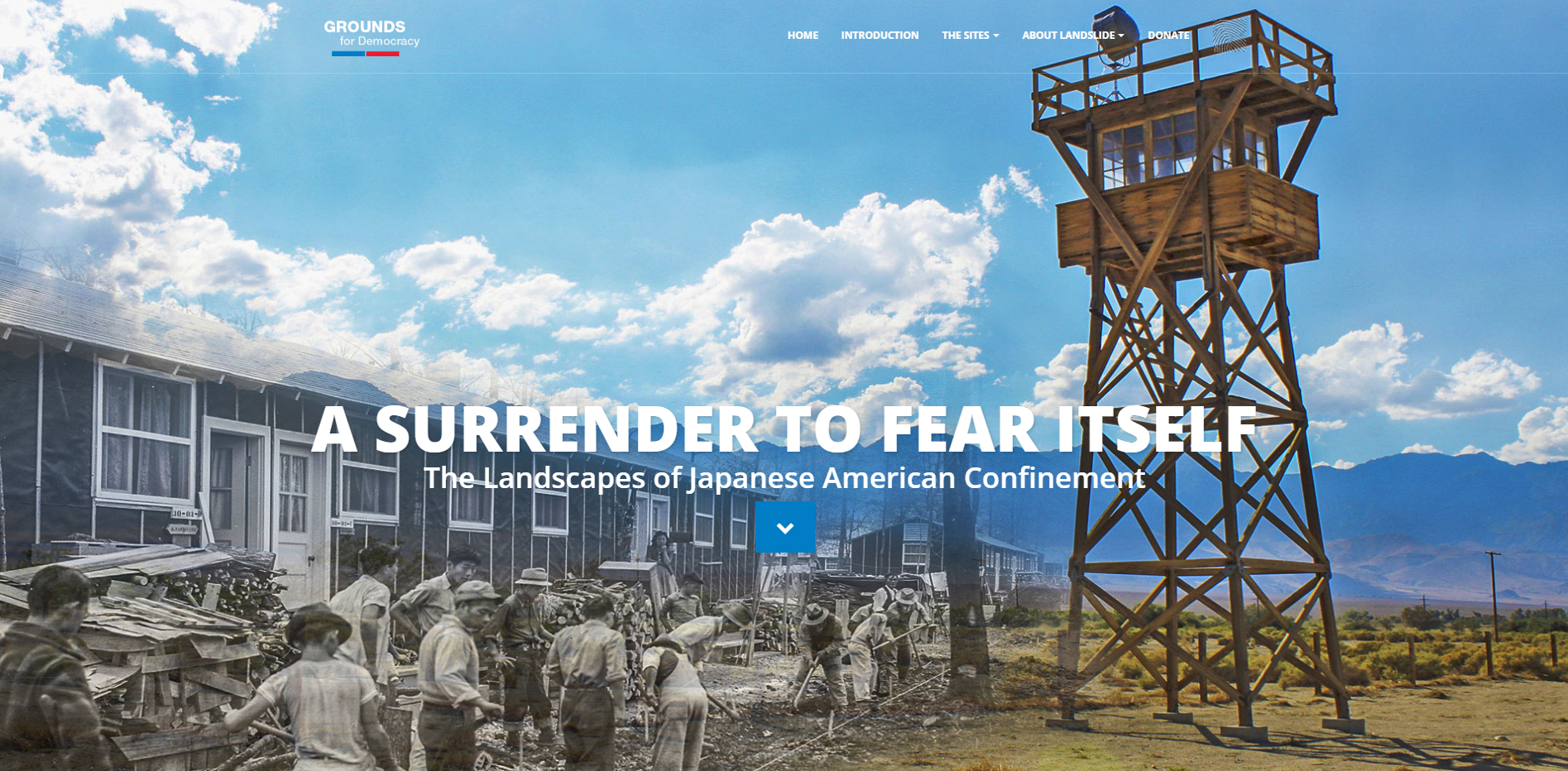 The Cultural Landscape Foundation (TCLF) recently released their fifteenth annual thematic report of threatened and at-risk landscapes. Due to the urging of the Japanese American Confinement Site Consortium (JACSC), the World War II Japanese American Confinement Sites are one of 10 national landscapes identified in the 2018 campaign and are featured on a TCLF microsite, A Surrender to Fear Itself: The Landscapes of Japanese American Confinement. The campaign, titled Landslide 2018: Grounds for Democracy, aims to “draw immediate and lasting attention to these threatened and unique sites by making them visible, revealing their value, and promoting public engagement in the form of advocacy and stewardship.”
The Cultural Landscape Foundation (TCLF) recently released their fifteenth annual thematic report of threatened and at-risk landscapes. Due to the urging of the Japanese American Confinement Site Consortium (JACSC), the World War II Japanese American Confinement Sites are one of 10 national landscapes identified in the 2018 campaign and are featured on a TCLF microsite, A Surrender to Fear Itself: The Landscapes of Japanese American Confinement. The campaign, titled Landslide 2018: Grounds for Democracy, aims to “draw immediate and lasting attention to these threatened and unique sites by making them visible, revealing their value, and promoting public engagement in the form of advocacy and stewardship.”
Amache sustained major hail damage on July 29, 2018
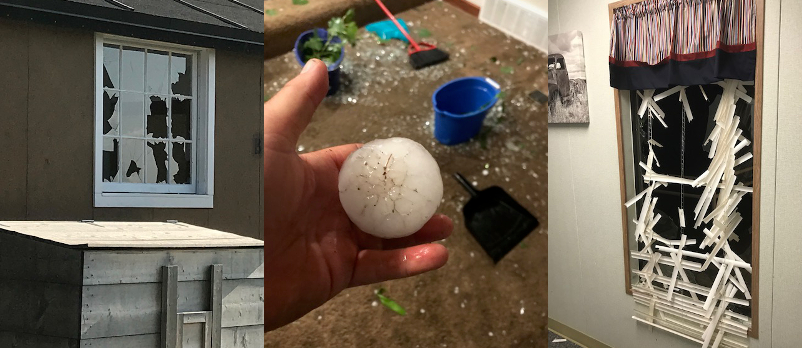
A hailstorm on July 29 delivered baseball-sized hail driven by 70 mph winds, resulting in damage at the Amache site, research center, and other buildings/structures in Granada. The barracks building on the Amache site lost 65 of its small-pane windows, there was also damage to the water tower and guard tower. The research center also lost many windows, needed to be re-roofed, and needs new fencing. Amache Preservation Society was able to secure the buildings, protect all artifacts, and perform crucial repairs. Thanks to the outpouring of support from the Amache community, immediate costs were covered, but larger repairs are still ongoing. Members of APS are also volunteering their time and assistance to Granada community members whose homes, vehicles, and other property sustained major damage.
You can send tax-deductible donations directly to the Amache Preservation Society or through our PayPal Donate button.
Order 9066 Podcast Series now available
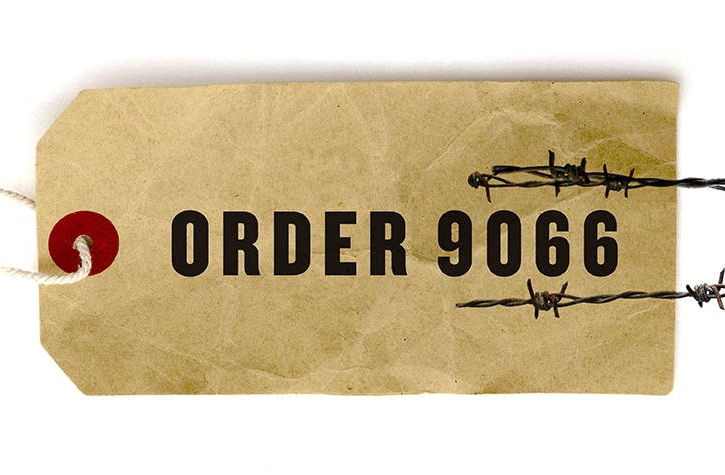 APM reports and the Smithsonian’s National Museum of American History recently released Order 9066, a podcast series chronicling the history of the Japanese-American incarceration through vivid, first-person accounts. It is narrated by Sab Shimono and Pat Suzuki, veteran actors and stage performers incarcerated at Amache.
APM reports and the Smithsonian’s National Museum of American History recently released Order 9066, a podcast series chronicling the history of the Japanese-American incarceration through vivid, first-person accounts. It is narrated by Sab Shimono and Pat Suzuki, veteran actors and stage performers incarcerated at Amache.
Original Recreation Hall Moved Back to Amache
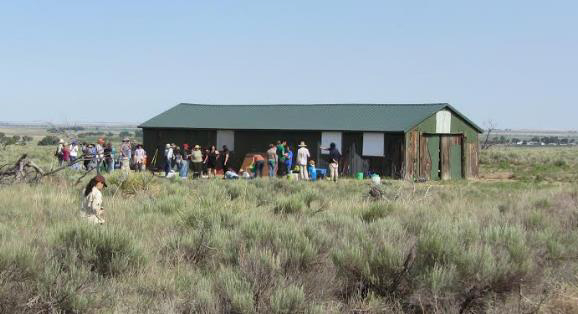 The 11-F Recreation Hall was moved back to its original Amache foundation from the town of Granada in time for the annual May Amache pilgrimage. Colorado Preservation Inc. (CPI) documented the process with a media crew to share the experience. Several local and international media outlets also publicized articles about moving the rec hall back to Amache. The area around the rec hall was one of the archaeological sites studied this year by the Denver University Field School. Aside from moving the rec hall, the larger project included the addition of fences around the water and guard towers, lighting the water tower, and adding a historic searchlight, comparable to the original, to the guard tower.
The 11-F Recreation Hall was moved back to its original Amache foundation from the town of Granada in time for the annual May Amache pilgrimage. Colorado Preservation Inc. (CPI) documented the process with a media crew to share the experience. Several local and international media outlets also publicized articles about moving the rec hall back to Amache. The area around the rec hall was one of the archaeological sites studied this year by the Denver University Field School. Aside from moving the rec hall, the larger project included the addition of fences around the water and guard towers, lighting the water tower, and adding a historic searchlight, comparable to the original, to the guard tower.
All Ten National JAMF Student Videos Now Available
 The National Japanese American Memorial Foundation‘s Digital Storytelling Project trained high school students in video production to tell stories of the 10 internment camp sites. The videos are now available on the NJAMF website. Amache’s digital story was produced by Halle Sousa, who participated in DU’s 2016 Archaeology Field School. Check out Halle’s video.
The National Japanese American Memorial Foundation‘s Digital Storytelling Project trained high school students in video production to tell stories of the 10 internment camp sites. The videos are now available on the NJAMF website. Amache’s digital story was produced by Halle Sousa, who participated in DU’s 2016 Archaeology Field School. Check out Halle’s video.
Sonoma State University Hosts Special Collections for Amache
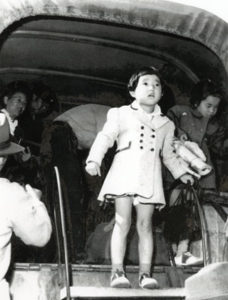 Sonoma State University’s North Bay Ethnic Digital Collection features photographs of daily life at the Amache Relocation Center in Colorado, home to over 7,000 interned Americans of Japanese ancestry during World War II, many of them from the North Bay. Sonoma State University Professor Emeritus Robert Fuchigami was an internee in the Amache Relocation Center and wrote the descriptions for many of the items in the Collection, which began as a grant-funded project and part of the University Library’s North Bay Ethnic Archive. The collection can be accessed online at https://northbaydigital.sonoma.edu/digital/collection/nbedc.
Sonoma State University’s North Bay Ethnic Digital Collection features photographs of daily life at the Amache Relocation Center in Colorado, home to over 7,000 interned Americans of Japanese ancestry during World War II, many of them from the North Bay. Sonoma State University Professor Emeritus Robert Fuchigami was an internee in the Amache Relocation Center and wrote the descriptions for many of the items in the Collection, which began as a grant-funded project and part of the University Library’s North Bay Ethnic Archive. The collection can be accessed online at https://northbaydigital.sonoma.edu/digital/collection/nbedc.
DU Honored by Society for Historical Archaeology
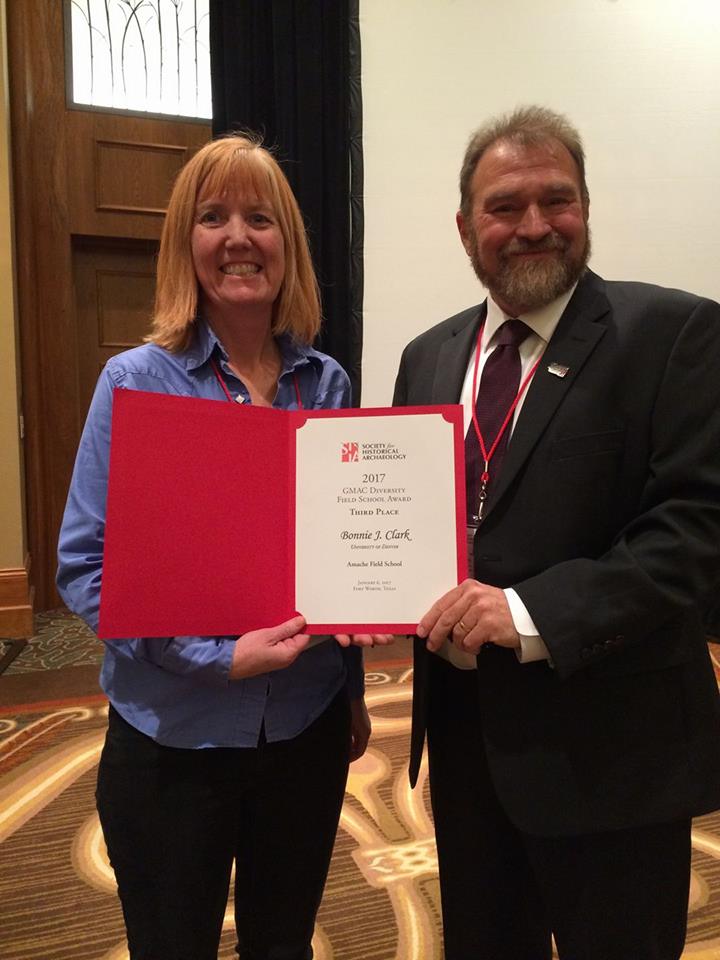 The DU Archaeology Field School was recognized for promoting diversity in the discipline at the Society for Historical Archaeology conference in January, 2017. The field school is typically offered every two years (in even years) and is a four-credit undergraduate level course for students interested in archaeology, museum studies, or history. High school internship and volunteer opportunities are available for those with family ties to the site. A Community Open House for those with personal or family connections to Amache and a Public Open House open to everyone are held each season. Congratulations, Dr. Bonnie Clark!
The DU Archaeology Field School was recognized for promoting diversity in the discipline at the Society for Historical Archaeology conference in January, 2017. The field school is typically offered every two years (in even years) and is a four-credit undergraduate level course for students interested in archaeology, museum studies, or history. High school internship and volunteer opportunities are available for those with family ties to the site. A Community Open House for those with personal or family connections to Amache and a Public Open House open to everyone are held each season. Congratulations, Dr. Bonnie Clark!
Smithsonian Youth Summit on JA Incarceration Now Available
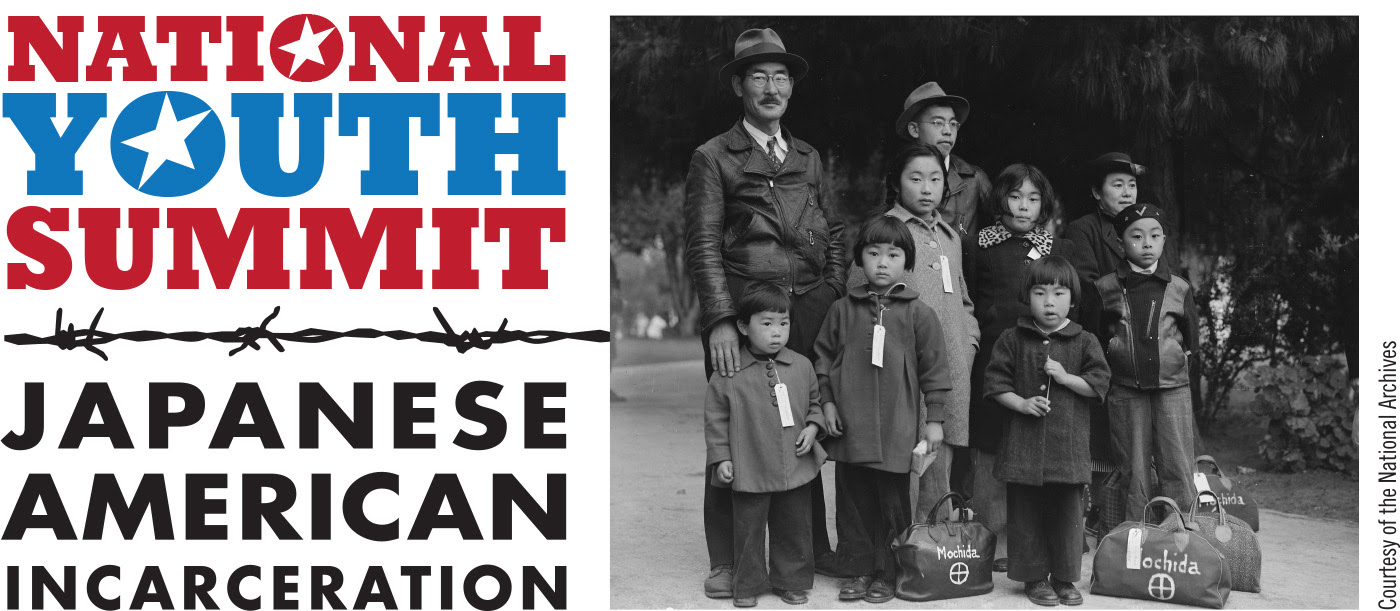 The Smithsonian’s National Museum of American History and the Japanese American National Museum held a National Youth Summit on Japanese American incarceration in World War II on Tuesday, May 17, 2016 from 1–2 PM EDT. The recording of the full webcast is now available on the Smithsonian’s website.
The Smithsonian’s National Museum of American History and the Japanese American National Museum held a National Youth Summit on Japanese American incarceration in World War II on Tuesday, May 17, 2016 from 1–2 PM EDT. The recording of the full webcast is now available on the Smithsonian’s website.
High Plains Public Radio Continues to feature Amache
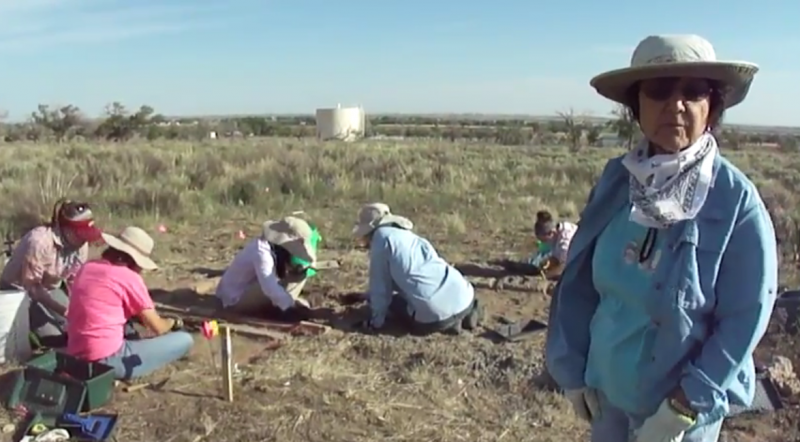 In July, 2014, High Plains Public Radio began a series featuring Amache, including background on the site and interviews with former internees and Denver University Archaeology Field School participants. A June 15, 2015 article links to an overview of historic preservation activities.
In July, 2014, High Plains Public Radio began a series featuring Amache, including background on the site and interviews with former internees and Denver University Archaeology Field School participants. A June 15, 2015 article links to an overview of historic preservation activities.
Bricks, Bricks, and more Bricks!
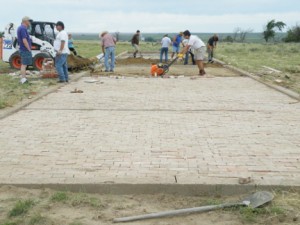 On Saturday, June 6, 2015, 26 volunteers helped Amache Preservation Society lay bricks for the floor of a barrack that will be reconstructed to give visitors a sense of what it was like to live at Amache. The project was sponsored by Colorado Preservation, Inc. and the construction was monitored by Wattle & Daub Co. They laid 4,500 bricks in one day! Read the full article for more details.
On Saturday, June 6, 2015, 26 volunteers helped Amache Preservation Society lay bricks for the floor of a barrack that will be reconstructed to give visitors a sense of what it was like to live at Amache. The project was sponsored by Colorado Preservation, Inc. and the construction was monitored by Wattle & Daub Co. They laid 4,500 bricks in one day! Read the full article for more details.
Amache Survivor Publishes Memoir, “Gasa Gasa Girl Goes to Camp”
 Amache survivor Lily Yuriko Havey was 10 when she and her family were evacuated to Amache. Her book reveals memories of that time in paintings evocative of that traumatic experience. Lily has had book signings at the Japanese American National Museum and at the April 2015 Amache Reunion in Las Vegas. She says the next stage in her family’s story may be making a film of her mother’s life. Read more about the author and her book in the High Country News, Havey’s website, and facebook page.
Amache survivor Lily Yuriko Havey was 10 when she and her family were evacuated to Amache. Her book reveals memories of that time in paintings evocative of that traumatic experience. Lily has had book signings at the Japanese American National Museum and at the April 2015 Amache Reunion in Las Vegas. She says the next stage in her family’s story may be making a film of her mother’s life. Read more about the author and her book in the High Country News, Havey’s website, and facebook page.